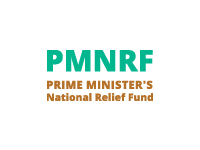To be published in the Gazette of India Extra ordinary, Part II section 3, sub-section (i) ]
Government of India
Ministry of Consumer Affairs, Food and Public Distribution
Department of Consumer Affairs
NOTIFICATION
New Delhi, the 31, March 2005
GSR 199 (E)– In exercise of the powers conferred by section 83 of the Standards of Weights and Measures Act, 1976 (60 of 1976), the Central Government hereby makes the following rules further to amend the Standards of Weights and Measures (General) Rules, 1987, namely:-
1. (1)These rules may be called the Standards of Weights and Measures (General) Amendment Rules, 2005.
(2)It shall come into force immediately on the expiry of one hundred eighty days from the date of their publication in the Official Gazette.
2. In the Standards of Weights and Measures (General) Rules, 1987,
(a) under the heading “INDEX OF SCHEDULE TO THE STANDARDS OF WEIGHTS AND MEASURES (GENERAL) RULES”, under the sub-heading “EIGHTH SCHEDULE”, after the entry “PART IX, Taxi meter”, the entry “PART X Compressed Gaseous Fuel (CNG) Measuring Systems for Vehicles” shall be inserted;
(b) in the Eighth Schedule, after Part IX, the following Part shall be inserted, namely:-
PART X
COMPRESSED GASEOUS FUEL (CNG) MEASURING SYSTEMS FOR VEHICLES
HEADING - A
1- Scope
(1) These specifications lay down the metrological and technical requirements applicable to compressed gaseous fuel measuring systems for vehicles. It also specifies the requirements for the approval of constituents elements of the measuring systems (meter, etc.). Measuring systems for liquid petroleum gas are not in the scope of this specification as the fluid is at liquid state.
In general, the measuring systems that are covered by this specification are intended for the refueling of roadside motor vehicles, small boats, aircraft and for trains.
In principle, these specifications apply to all measuring systems fitted with a meter as defined in paragraph 1, sub paragraph (1) (continuous measurement), whatever be the measuring principle of the meters or their application.
TERMINOLOGY
1 Measuring system and its constituents
(1) Meter
An instrument intended to measure continuously, memorizes and display the quantity of gas passing through the measurement transducer at metering conditions.
Note: A meter includes at least a transducer, a calculator (including adjustment or correction devices if present) and an indicating device.
(2) Measurement transducer
A part of the meter which transforms the flow of the gas to be measured into signals which are passed to the calculator. It may be autonomous or use an external power source.
Note: For the purposes of these specifictions, the measurement transducer includes the flow or quantity sensor.
(3) Calculator
A part of the meter that receives the output signals from the transducer(s) and, possibly, from associated measuring instruments, transforms them and, if appropriate, stores in memory the results until they are used. In addition, the calculator may be capable of communicating both ways with peripheral equipment.
(4) Indicating device
A part of the meter, which displays continuously the measurement results.
Note: A printing device which provides an indication at the end of the measurement is not an indicating device.
(5) Ancillary device
A device intended to perform a particular function, directly involved in elaborating, transmitting or displaying-measurement results.
Main ancillary devices are-
(a) zero setting devices,
(b) repeating indicating device,
(c) printing device,
(d) memory device,
(e) price indicating device,
(f) totalizing indicating device, pre-setting device, and
(g) self-service device.
(6) Additional device
A part or a device, other than an ancillary device, required to ensure correct measurement or intended to facilitate the measuring operations, or which could in any way affect the measurement.
Main additional devices are-
(a) filter,
(b) device used for the transfer point,
(c) anti-swirl device,
(d) branches or bypasses,
(e) valves, and
(f) hoses.
(7) Measuring system
A system which comprises the meter itself and all the ancillary devices and additional devices.
(8) Compressed gaseous fuel measuring systems for vehicles
A measuring system intended for the refueling of motor vehicles with compressed gaseous fuel.
(9) Pre-setting device
A device which permits the selection of the quantity to be measured and which automatically stops the flow of the gas at the end of the measurement of the selected quantity.
Note: The pre-set quantity may be the mass or the related price to pay.
(10) Adjustment device
A device incorporated in the meter, that only allows shifting of the error curve generally parallel to itself, with a view to bringing errors within the maximum permissible errors.
(11) Associated measuring instruments
Instruments connected to the calculator or the correction device, for measuring certain quantities which are characteristic of the gas, with a view to making corrections.
(12) Correction device
A device connected to or incorporated in the meter for automatically correcting the mass, by taking into account the flow rate or the characteristics of the gas to be measured (viscosity, temperature, pressure) and the pre-established calibration curves or both.
(13) Transfer point
A point at which the gas is defined as being delivered.
2 Self service measuring systems
(1) Self-service arrangement
An arrangement that allows the customer to use a measuring system for the purpose of obtaining gas for his own purchase.
(2) Self-service device
A specific device that is part of a self-service arrangement and which allows one or more measuring systems to perform in this self-service arrangement.
Note: The self-service device includes all the elements and constituents that are mandatory so that a measuring system performs in a self-service arrangement.
The arrangement is made of a self-service device and connected measuring systems.
(3) Attended service mode
An operating mode of a self-service arrangement in which the supplier is present and controls the authorization for the delivery,
(4) Unattended service mode
An operating mode of a self-service arrangement in which the self-service arrangement controls the authorization for the delivery, based on an action of the customer.
Note: In unattended service mode, the end of the measurement operation is the end of the registration (printing and/or memorizing) of information concerning the measurement operation.
(5) Pre-payment
A type of payment in attended or unattended service mode requiring payment for a quantity of gas before the delivery commences.
(6) Attended post-payment (or post-payment)
A type of payment in attended service mode requiring payment for the delivery but before the customer leaves the site of the delivery.
(7) Unattended post-payment (or delayed payment)
A type of payment in unattended service mode in which payment for the delivered quantity is required after the delivery, but in which the transaction is not settled when the customer leaves the site, following an implicit agreement with the supplier.
(8) Authorization of a measuring system
An operation that brings the measuring system into a condition suitable for the commencement of the delivery.
3 Metrological characteristics
(1) Primary indication
An indication (displayed, printed or memorized) which is subject to legal metrology control.
Note: Indications other than primary indications are commonly referred to as secondary indications.
(2) Absolute error of measurement
The result of a measurement minus the (conventional) true value of the measurand.
(3) Relative error
The absolute error of measurement divided by the (conventional} true value of the measurand.
(4) Maximum permissible errors
The extreme values permitted by the specification for an error.
(5) Minimum measured quantity of a measuring system
The smallest mass of gas for which the measurement is metrologically acceptable for that system.
Note: In measuring systems intended to deliver, this smallest mass is also referred to as the minimum delivery.
(6) Minimum specified mass deviation
The absolute value of the maximum permissible error for the minimum measured quantity of a measuring system.
(7) Minimum specified price deviation
The price to pay corresponding to the minimum specified mass deviation.
(8) Repeatability error
For the purposes of this specification, the difference between the largest and the smallest results of successive measurements of the same quantity carried out under the same conditions.
(9) Intrinsic error
The error of a measuring system determined under reference conditions.
(10) Initial intrinsic error
The intrinsic error of a measuring system as determined prior to all performance tests.
(11) Fault
The difference between the error of indication and the (initial) intrinsic error of a measuring system.
(12) Significant fault
For the mass, a fault means magnitude of which is greater than the larger of these two values :
(i) one tenth of the magnitude of the maximum permissible error for the measuring system and for the measured mass,
(ii) the minimum specified mass deviation.
For the price to pay, the price corresponding to the significant -fault for the mass. Note : no fault is allowed for the unit price.
The following are not considered to be significant faults:.
(i) faults arising from simultaneous and mutually independent causes in the measuring instrument itself or in its checking facilities,
(ii) transitory faults being momentary variations in the indication,
which cannot be interpreted, memorized or transmitted as a measurement result;
(13) Durability
The capability of the measuring system to keep its performance characteristics over a period of use, for electronic purposes.
4 Tests and test conditions
(1) Influence quantity-
A quantity which is not the subject of the measurement but which influences the value of the measurand or the indication of the measuring system.
(2) Influence factor-
An influence quantity having a value within the rated operating conditions of the measuring system, as specified in these specifications.
(3) Disturbance-
An influence quantity having a value outside the specified rated operating conditions of the measuring system.
Note: An influence quantity is a disturbance if for that influence quantity the rated operating conditions are not specified.
(4) Rated operating conditions-
Conditions of use, giving the range of values of influence quantities for which the metrological characteristics are intended to be within the maximum permissible errors.
(5) Reference conditions-
A set of specified values of influence factors fixed to ensure valid inter comparison of results of measurements.
(6) Performance test-
A test intended to verify whether the measuring system under test (EUT) is capable of accomplishing its intended functions.
(7) Endurance test-
A test intended to verify whether the meter or the measuring system is able to maintain its performance characteristics over a period of use.
(8) Bank-
A test reservoir or a set of test reservoirs manifolded together which forms part of a multi-segment gas storage system. The segments operate at different pressure levels from one another in refueling systems fitted with or using a sequential control device.
Note: Testing by using banks generate transient flow rates.
(9) Sequential control device-
A device which allows switching from a bank to another one. This device may be included in a measuring system or may be part of the refueling station.
5 Electronic or electrical equipment
(1) Electronic device-
A device employing electronic sub-assemblies and performing a specific function.
Note: Electronic devices, as defined above, may be complete measuring systems or part of measuring systems.
(2) Electronic sub-assembly.-
A part of an electronic device, employing electronic components and having a recognizable function of its own.
(3) Electronic component.-
The smallest physical entity which uses electron or hole conduction in semiconductors, gases, or in a vacuum.
(4) Checking facility.-
A facility which is incorporated in a measuring system and which enables significant faults to be detected and acted upon.
Note: The checking of a transmission device aims at verifying that all the information which is transmitted is fully received by the receiving equipment..
(5) Automatic checking facility.-
A checking facility operating without the intervention of an operator.
(6) Permanent automatic checking facility (type P)
An automatic checking facility operating during the entire measurement operation.
(7) Intermittent automatic checking facility (type I)
An automatic checking facility operating at least once, either at the beginning or at the end of each measurement operation.
(8) Power supply device
A device which provides the electronic devices with the required electrical energy, using one or several sources of a.c. or d.c.









 उपभोक्ता मामले विभाग
उपभोक्ता मामले विभाग










